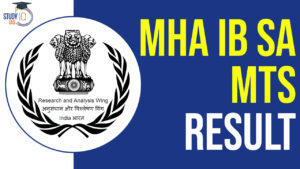Daily Current Affairs for UPSC 2023
Q) Recently seen in news, the ‘Operation Kaveri’ is related to which one of the following?
- The operation to evacuate victims of human trafficking
- For rejuvenation of the River Kaveri and its tributaries
- To evacuate Indian nationals from conflict-torn Sudan
- Anti-terrorism exercise in the Indian Ocean Region
Daily Current Affairs for UPSC – 24 April 2023
Explanation:
- Option (3) is correct: India has started Operation Kaveri to evacuate its nationals from conflict-torn Sudan. Nearly 3,000 Indians are stuck in various parts of Sudan, including the national capital, Khartoum, and distant provinces such as Darfur. Two Indian Air Force C-130J are currently positioned on standby in Jeddah and, INS Sumedha has reached Port Sudan. India is coordinating closely with various partner countries for the safe movement of those Indians who are stranded in Sudan and would like to be evacuated. The MEA and the Indian embassy in Sudan have been in regular touch with the UN, Saudi Arabia, the UAE, Egypt and the US among others. Sudan is Africa’s third largest country by area. Before secession of South Sudan it was the largest. White and Blue Niles merge at Khartoum, the capital of Sudan. Darfur region is infamous for civil war. Most of the region consists of a semi-arid plain and thus appears unsuitable for developing a large and complex civilization.
Q) Consider the following statements about Logistic Performance Index (LPI) 2023:
- India’s ranking has declined over the past year in the index.
- The indicator based on speed of trade is included for the first time in the LPI 2023.
- The index is released annually.
Which of the statements given above is/are correct?
- 1 and 2 only
- 2 only
- 1 and 3 only
- 1, 2 and 3
Explanation:
- Statements 1 and 3 are incorrect: India has improved its ranking on the World Bank’s Logistic Performance Index 2023 by six spots, now ranking at 38th out of 139 countries. Furthermore, India’s ranking has improved drastically since 2014, when it was placed in the 54th position on the LPI. It comes out every two years (from 2010 to 2018); however, after the COVID-19 break, the report has been released now in 2023. It measures the ease of establishing reliable supply chain connections and structural factors that make it possible, such as the quality of logistics services, trade and transport-related infrastructure, as well as border controls.
- Statement 2 is correct: The LPI 2023 allows for comparisons across 139 countries. The 2023 LPI for the first time measures the speed of trade with indicators derived from big datasets tracking shipments. Government has unveiled National Logistics Policy (NLP) with the aim of promoting the seamless movement of goods and enhancing the competitiveness of the industry. Three targets under NLP 2022:
- First, to reduce cost of logistics in India to be comparable to global benchmarks by 2030.
- Second, improve the Logistics Performance Index ranking, to be among top 25 countries by 2030.
- Third, create data driven decision support mechanism for an efficient logistics ecosystem.
Q) With reference to India’s First Water Body Census, consider the following statements:
- All man-made units that are used for industrial purposes are considered water bodies.
- All the water bodies located in rural areas that are not in use are also included in the census.
- As per the census, out of the total water bodies being encroached upon, about 95 percent are in urban areas.
Which of the statements given above is/are correct?
- 1 and 2 only
- 2 and 3 only
- 3 only
- 1, 2 and 3
Explanation:
- Statements 1 and 2 are correct: The Ministry of Jal Shakti has released the report of India’s first water bodies’ census. The census provides a comprehensive inventory of India’s water resources, including natural and man-made water bodies like ponds, tanks, lakes, and more, and to collect data on the encroachment of water bodies. It covers all the water bodies located in rural as well as urban areas that are in-use or not in-use. The census also took into account all type of uses of water bodies like irrigation, industry, pisciculture, domestic/ drinking, recreation, religious, ground water recharge etc. According to the First Census Report, “all natural or man-made units bounded on all sides with some or no masonry work used for storing water for irrigation or other purposes (e.g. industrial, pisciculture, domestic/ drinking, recreation, religious, ground water recharge etc.)” are considered as water bodies.
- Statement 3 is incorrect:6% water-bodies out of all the enumerated ones are reported to be encroached, out of which 95.4% are in rural areas and remaining 4.6% in urban areas. Uttar Pradesh accounted for almost 40% of water bodies under encroachment, followed by Tamil Nadu and Andhra Pradesh. No encroachment wasreported from West Bengal, Sikkim, Arunachal Pradesh, and Chandigarh. West Bengal has the highest number of ponds and reservoirs. Andhra Pradesh has highest number of tanks. Tamil Nadu has the highest number of lakes. Maharashtra is the leading state with water conservation schemes.
Q) Consider the following statements about Biodiversity Heritage Site (BHS):
- BHS are well-defined areas that have the presence of threatened and keystone species.
- The Ministry of Environment and Forests frames rules for the management and conservation of BHS.
- The creation of BHS restricts the usages of the forest produce by local communities.
Which of the statements given above is/are correct?
- 1 only
- 1 and 2 only
- 2 and 3 only
- 1, 2 and 3
Explanation:
- Statement 1 is correct: Biodiversity Heritage Sites (BHS) are well-defined areas that are unique, ecologically fragile ecosystems with high diversity of wild and domesticated species, presence of rare and threatened species, and keystone species. Enhance the quality of life of local communities through the conservation of such sites.
- Statement 2 and 3 are incorrect: West Bengal state government has added four new biodiversity heritage sites (BHS). Under Section 37(1) of ‘Biological Diversity Act, 2002’, State Government may, from time to time in consultation with the local bodies notify these sites. The State Government in consultation with the Central Government may frame rules for the management and conservation of BHS. Creation of BHS may not put any restriction on the prevailing practices and usages of the local communities, other than those voluntarily decided by them. Nallur Tamarind Grove in Bengaluru, Karnataka was the first Biodiversity Heritage Site of India, declared in 2007.
Q) With reference to Notifiable Disease, consider the following statements:
- The Ministry of Health and Family Welfare is responsible for notifying any disease by law.
- Recently, malaria became the first disease to be added to the notifiable disease list.
Which of the statements given above is/are correct?
- 1 only
- 2 only
- Both 1 and 2
- Neither 1 nor 2
Explanation:
- Statement 1 is incorrect: A notifiable disease is any disease that is required by law to be reported to government authorities. The Centre has notified several diseases such as cholera, diphtheria, encephalitis, leprosy, meningitis, pertussis (whooping cough), plague, tuberculosis, AIDS, hepatitis, measles, yellow fever, malaria dengue, etc. The onus of notifying any disease and the implementation lies with the state government. Any failure to report a notifiable disease is a criminal offence and the state government can take necessary actions against defaulters. It helps the government keep track and formulate a plan for elimination and control. It improves information about the burden and distribution of disease.
- Statement 2 is incorrect: Malaria is set to become a notifiable disease across India, with Bihar, Andaman and Nicobar Islands and Meghalaya too in the process of putting this vector-borne disease in the category. This will then require by law that cases be reported to government authorities. Currently malaria is a notifiable disease in 33 States and Union Territories in India. It is part of India’s vision to be malaria-free by 2027 and to eliminate the disease by 2030.


 SSC Stenographer 2024 Notification Out a...
SSC Stenographer 2024 Notification Out a...
 IB SA MTS Final Result 2024 Out at mha.g...
IB SA MTS Final Result 2024 Out at mha.g...
 Model Skill Loan Scheme, Eligibility, Re...
Model Skill Loan Scheme, Eligibility, Re...

















